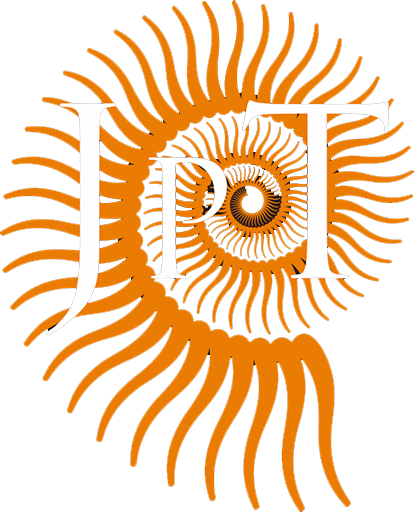JPT No. 24 – A study in the temperature changes in the cleaning of fossil bones by Er:YAG (2940 nm)
Alessia Andreotti1*, Alessio Ceccarini1, Maria Perla Colombini1, Adele De Cruz2 and Mark Norell2
1 – Chemistry and Industrial Chemistry Department, Pisa University, Italy
2 – American Museum of Natural History, New York, USA
Emails: alessia.andreotti@unipi.it (AA); alessio.ceccarini@unipi.it (AC); maria.perla.colombini@unipi.it (MPC); adecruz@amnh.org (ADC); norell@amnh.org (MN)
ABSTRACT
This work examines the feasibility of monitoring temperature changes during laser cleaning to ensure the safe removal of unwanted materials from fossil bones. The use of laser technology for cleaning fossils originated from the need to clean a vast collection of fossil finds from the American-Mongolian Expedition (2017) of the Museum of Natural History in New York. One of the steps in the conservation of fossils involves removing the residues of soil and unwanted materials such as consolidation or restoration products that have degraded over time. The main aim of this study was to optimize the Er:YAG Laser parameters for the effective and safe cleaning of different rock matrices, unwanted organic remains, and past conservation materials such as Paraloid B72, which can be very cohesive to the surface of the fossil. The museum collection provided an opportunity to test for the first time the Er:YAG Laser for cleaning a large variety of bones from dinosaurs and animals from hundreds of millions of years ago: fossils of Coryphodon (Paleocene-Eocene, 66-33My), Psittacosaurus (Cretaceous, 123-100My) and also Hapalemur simus and Hyrax. To fully understand the effects of the laser cleaning, the chemical characterisation of the unwanted material and residues of biological tissue was performed using infrared spectroscopy and chromatographic techniques. Pyrolysis analysis was also carried out on the ablated material and on the fossils after cleaning. The laser tests were executed in the presence or absence of various auxiliary wetting agents and by irradiating the samples with different energy fluences, repetition rates and number of consecutive pulses. The temperature measurements were performed with an infrared sensor system (FT-H10 Sensor Head, by Keyence, U.S.A) with the appropriate setting, avoiding any interference. The IR measurement system was tested on model specimens comparing the surface temperature (infrared sensor) with the bulk temperature measured with a Type T (copper-constantan) thermocouple inserted into the reference material. The experimental set up was then applied to the fossil bones with the right working conditions for safe laser cleaning. Experimental results demonstrated that the irradiation with an Er:YAG long pulse duration (300 μs) laser induced a limited temperature increase on the surface, when working with a threshold fluence under 2.5 J/cm2, and using ethanol as a wetting agent during the irradiation.
RESUMO [in Portuguese]
Este trabalho examina a viabilidade de monitorar as mudanças de temperatura de ossos fósseis durante a limpeza a laser para assegurar a remoção segura de materiais indesejáveis. A utilização da tecnologia laser para a limpeza de fósseis teve origem na necessidade de limpar uma vasta colecção de achados fósseis da Expedição Americana-Mongoliana (2017) do Museu de História Natural de Nova Iorque. Uma das etapas na conservação de fósseis envolve a remoção dos resíduos de solo e materiais indesejados, tais como produtos para consolidação ou restauração que se degradaram ao longo do tempo. O principal objectivo deste estudo foi optimizar os parâmetros do Laser Er:YAG para a limpeza eficaz e segura de diferentes matrizes rochosas, restos orgânicos indesejados, e materiais de conservação passados, como o Paraloid B72, que pode estar muito coeso à superfície do fóssil. A colecção do museu proporcionou uma oportunidade de testar pela primeira vez o Laser Er:YAG para a limpeza de uma grande variedade de ossos de dinossauros e animais de centenas de milhões de anos atrás: fósseis de Coryphodon (Paleoceno-Eoceno, 66-33Ma), Psittacosaurus (Cretáceo, 123-100Ma) e também Hapalemur simus e Hyrax. Para compreender plenamente os efeitos da limpeza a laser, a caracterização química do material indesejado e dos resíduos de tecido biológico foi realizada utilizando espectroscopia de infravermelho e técnicas cromatográficas. A análise de pirólise também foi realizada no material ablacionado e nos fósseis após a limpeza. Os testes com laser foram executados na presença ou ausência de vários agentes molhantes auxiliares e por irradiação das amostras com diferentes fluências energéticas, taxas de repetição e número de pulsos consecutivos. As medições de temperatura foram realizadas com um sistema de senso infravermelho (FT-H10 Sensor Head, por Keyence, E.U.A) com a configuração apropriada, evitando qualquer interferência. O sistema de medição de IV foi testado em amostras-modelo comparando a temperatura da superfície (sensor de infravermelho) com a temperatura a granel medida com um termopar do tipo T (cobre-constantan) inserido no material de referência. A configuração experimental foi então aplicada aos ossos fósseis com as condições de trabalho adequadas para uma limpeza a laser segura. Os resultados experimentais demonstraram que a irradiação com um laser Er:YAG com pulso de longa duração (300 μs) induziu um aumento limitado da temperatura na superfície, quando se trabalha com uma fluência de limiar inferior a 2,5 J/cm2, e utilizando etanol como um agente molhante durante a irradiação.

